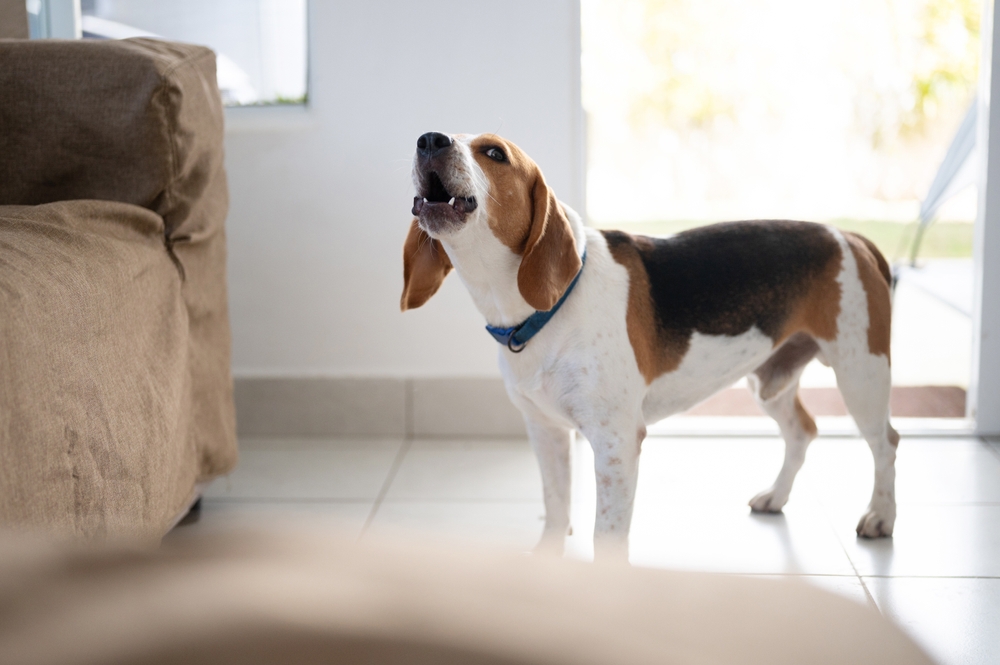When dogs misbehave, many owners immediately think the solution lies in training commands or discipline. While those are important, what often gets overlooked is the role of the environment. A dog’s surroundings shape how they think, feel, and act every single day. By making simple adjustments at home and in daily routines, you can often reduce unwanted dog behaviors more effectively than through correction alone.
At Innovative K9 Academy, we’ve seen time and again how tweaking the environment transforms frustrating habits into positive, calm behavior. Let’s explore how this works and what changes you can make to see real results.
How Surroundings Influence a Dog’s Actions
Dogs are highly responsive to the spaces they live in. Just like humans, they can feel stressed, overstimulated, or under-stimulated depending on their environment. A dog that constantly hears loud noises outside may bark excessively. One confined in a dull or cramped area may chew, dig, or pace.
Your home and outdoor routines either encourage good behavior or make it harder for your dog to succeed. Recognizing this influence helps you set up a world where your dog is more likely to make good choices naturally.
Common Environmental Triggers for Bad Behavior
To understand how to reduce unwanted dog behaviors, it helps to identify the triggers first. Some of the most common include:
- Excessive noise: Traffic, construction, or other dogs barking can cause anxiety and reactivity.
- Lack of structure: Inconsistent feeding, play, and rest times can lead to restless or destructive behavior.
- Isolation: Dogs left alone for long stretches without stimulation often develop separation anxiety.
- Overstimulation: A busy household with constant activity can overwhelm sensitive dogs, resulting in hiding or growling.
- Boredom: Without toys, exercise, or mental challenges, dogs may chew furniture or dig holes just to stay busy.
By spotting which triggers affect your dog, you can target the environmental changes that will make the biggest difference.
Adjusting Your Home Setup for Better Behavior
One of the simplest ways to help your dog succeed is to make your home setup work in their favor. Here are a few examples:
- Create a safe zone: Give your dog a designated bed, crate, or quiet corner where they can relax without interruption. This teaches self-soothing and reduces stress.
- Remove temptations: If your dog steals food or chews shoes, keep these items out of reach until good habits are established.
- Consistent routines: Dogs thrive on predictability. Feeding, walks, and rest should follow a regular schedule.
- Window management: If your dog barks at passersby, close blinds or create barriers to minimize visual triggers.
These changes not only reduce bad behaviors but also reinforce trust by making your home environment clear and supportive.
The Importance of Mental Stimulation and Enrichment
A tired mind is just as important as a tired body. Without mental challenges, dogs will create their own entertainment—usually in ways you don’t appreciate. Puzzle feeders, chew toys, hide-and-seek games, and training sessions all keep your dog engaged.
Enrichment also reduces stress. Sniff walks, for instance, allow dogs to use their natural instincts, leaving them calmer and more satisfied afterward. At Innovative K9 Academy, we integrate enrichment into training because it reduces frustration and builds confidence, especially for anxious or reactive dogs.
Case Studies: Success Through Environmental Changes
To see the power of environment, consider a few real-life examples from our training experience:
- Case 1: The restless chewer – A young Labrador destroyed shoes whenever his owners left. We discovered boredom was the trigger. By adding puzzle feeders, scheduled exercise, and a crate with safe chews, the destructive behavior disappeared.
- Case 2: The nervous barker – A terrier barked at everything outside the window. Blocking his view of the street and adding background noise during the day drastically reduced his vocal outbursts.
- Case 3: The anxious rescue dog – A rescue struggled with separation anxiety. By creating a calm safe space, leaving comfort items, and gradually extending alone time, his anxiety lessened, and destructive habits stopped.
In all these cases, the right environment set the stage for better training and happier dogs.
Why Addressing Environment Is More Effective Than Punishment
Correcting bad behavior without changing the environment is like scolding a child for being tired while refusing to let them sleep. You might suppress the action temporarily, but it won’t solve the problem.
By addressing triggers and giving your dog healthier outlets, you naturally encourage better habits. This not only reduces frustration for you but also strengthens the bond between you and your pet. Dogs learn faster when they feel safe and supported, not punished for reacting to stressors they can’t control.
Conclusion
Unwanted behaviors don’t appear out of nowhere—they are responses to the world your dog lives in. By making thoughtful changes to that world, you can often eliminate the triggers that fuel barking, chewing, digging, or anxiety.
At Innovative K9 Academy, we’ve helped countless families transform their dogs’ lives through a combination of environmental adjustments and expert training. If you’re ready to create a calmer, more balanced household, we’re here to guide you every step of the way. With the right setup and the right support, you can reduce unwanted dog behaviors and enjoy the companionship you’ve always wanted.

